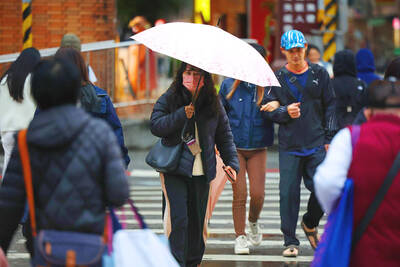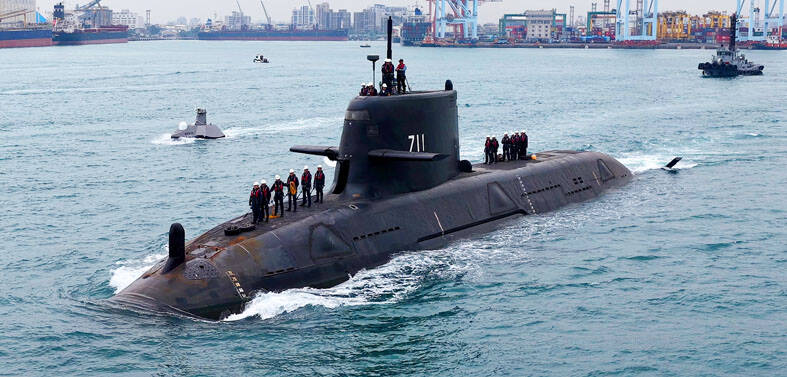Each of Taiwan's 31 electoral districts has its own special characteristics. Taoyuan County, which elects 13 members of the Legislature, is the nation's biggest electorate. It is also one of its most complex.
Home to 1,800,000 people, Taoyuan County has long been divided into the North, focused on Taoyuan city, and the South, which has Chungli city as its key city. The North is mainly Hoklo while the South is predominantly Hakka. In addition, numerous military bases and large numbers of military villages throughout the county mean that many Mainlanders also live in Taoyuan.

PHOTO: LU SHU-CHING, TAIPEI TIMES
In addition to the county's some 40,000 Aboriginal people, about one-half of the population is Hoklo, while one-third is Hakka and about one-sixth (or a bit more) is Mainlander.
In the authoritarian period, this ethnic division led to strong competition between a Hoklo and a Hakka faction. The divisions became so bad that the two sides agreed to a rotation of offices.
In addition to these ethnic elements, Taoyuan County also has a coastal region and a mountainous region. This interplay of ethnic and geographical differences makes the county extremely complex for any political party trying to win control. Yet, in the legislative election, Taoyuan elects over seven percent of the seats. Thus, Taoyuan County cannot be ignored.
Over the years, Taoyuan has tended to be a pan-blue citadel. In the March 2004 presidential election, Chinese Nationalist Party (KMT) Chairman Lien Chan (
People from all sides of the political spectrum agree about two key aspects of the current legislative campaign in Taoyuan.
First, all sides have nominated too many candidates. Nineteen of the twenty-eight candidates running for the thirteen positions are nominees of the four major parties.
In addition, there are at least one or two reasonably powerful non-partisans. Secondly, no party (with the partial exception of the KMT) has implemented a system of vote allocation.
For this election the DPP has nominated seven candidates, even though the presidential vote would suggest six candidates would have been more appropriate. Taoyuan has one seat guaranteed for a woman, and so the DPP added a woman to go with the six seats won by males in the primary election within the DPP.
However, this method of choosing candidates led to the selection of only three from the north -- the heartland of DPP support in Taoyuan -- and the nomination of four candidates in the south, three of whom are Hakka.
Into this mix the Taiwan Solidarity Union (TSU) has now nominated two candidates. Most believe only one, Huang Tsung-yuan (
The pan-blues also have nominated too many candidates. The KMT originally nominated six candidates, though a seventh, actually a member of the New Party, has come in under the KMT banner. The KMT nominations seem to have considered geographical origins more carefully than the DPP.
The geographical distribution has meant that the KMT has ordered each of the township party headquarters to help a specific candidate. This is the only vote allocation so far decreed in Taoyuan, but everyone (including KMT candidates) agrees that it is next to worthless.
Furthermore, the KMT votes in the Huang Fu-hsing (黃復興) Party Headquarters from retired servicemen have all been allocated to Chu Feng-chih (朱鳳芝), a female Mainlander KMT nominee. All other KMT candidates have complained about this distribution, especially as all public opinion polls have Chu in either first or second place, with almost twice as many votes as the third and fourth-ranked candidates. In terms of gender, two of the six original KMT candidates are women.
The PFP has nominated three candidates, bringing the total number of pan-blue nominees to ten. Together with the KMT's Chu, Sun Ta-chien (
With so many candidates running, the margin between winners and losers will be quite small. This means that successful vote allocation could improve a party's result by one or two seats, but it also means that mistakes in vote allocation could mean that a certain winner could lose.
Thus, with the complexity of the election, its uncertainty, and the lateness in the campaign, probably no party will attempt to implement a vote allocation strategy in Taoyuan County. The likelihood is that the pan-greens will keep their five seats and possibly increase their seats to six. But the leading pan-blue candidates will do well. In addition to Sun and Chu, Wu Chih-yang (
Bruce Jacobs is Professor of Asian Languages and Studies and Director of the Taiwan Research Unit at Monash University in Melbourne, Australia.

SHIPS, TRAINS AND AUTOMOBILES: The ministry has announced changes to varied transportation industries taking effect soon, with a number of effects for passengers Beginning next month, the post office is canceling signature upon delivery and written inquiry services for international registered small packets in accordance with the new policy of the Universal Postal Union, the Ministry of Transportation and Communications said yesterday. The new policy does not apply to packets that are to be delivered to China, the ministry said. Senders of international registered small packets would receive a NT$10 rebate on postage if the packets are sent from Jan. 1 to March 31, it added. The ministry said that three other policies are also scheduled to take effect next month. International cruise ship operators

NUMBERS IMBALANCE: More than 4 million Taiwanese have visited China this year, while only about half a million Chinese have visited here Beijing has yet to respond to Taiwan’s requests for negotiation over matters related to the recovery of cross-strait tourism, the Tourism Administration said yesterday. Taiwan’s tourism authority issued the statement after Chinese-language daily the China Times reported yesterday that the government’s policy of banning group tours to China does not stop Taiwanese from visiting the country. As of October, more than 4.2 million had traveled to China this year, exceeding last year. Beijing estimated the number of Taiwanese tourists in China could reach 4.5 million this year. By contrast, only 500,000 Chinese tourists are expected in Taiwan, the report said. The report

Temperatures are forecast to drop steadily as a continental cold air mass moves across Taiwan, with some areas also likely to see heavy rainfall, the Central Weather Administration (CWA) said. From today through early tomorrow, a cold air mass would keep temperatures low across central and northern Taiwan, and the eastern half of Taiwan proper, with isolated brief showers forecast along Keelung’s north coast, Taipei and New Taipei City’s mountainous areas and eastern Taiwan, it said. Lows of 11°C to 15°C are forecast in central and northern Taiwan, Yilan County, and the outlying Kinmen and Lienchiang (Matsu) counties, and 14°C to 17°C

STEERING FAILURE: The first boat of its class is experiencing teething issues as it readies for acceptance by the navy, according to a recent story about rudder failure The Hai Kun (海鯤), the nation’s first locally built submarine, allegedly suffered a total failure of stern hydraulic systems during the second round of sea acceptance trials on June 26, and sailors were forced to manually operate the X-rudder to turn the submarine and return to port, news Web site Mirror Daily reported yesterday. The report said that tugboats following the Hai Kun assisted the submarine in avoiding collisions with other ships due to the X-rudder malfunctioning. At the time of the report, the submarine had completed its trials and was scheduled to begin diving and surfacing tests in shallow areas. The X-rudder,